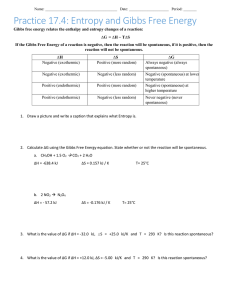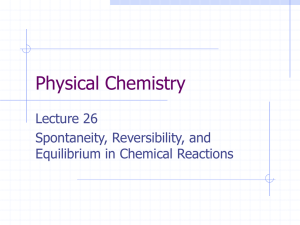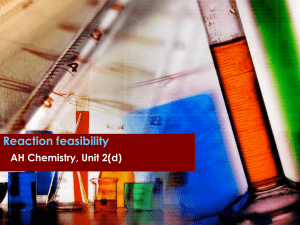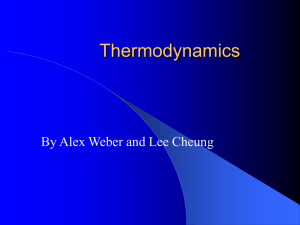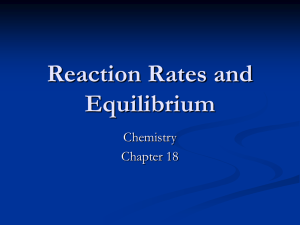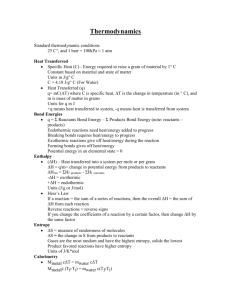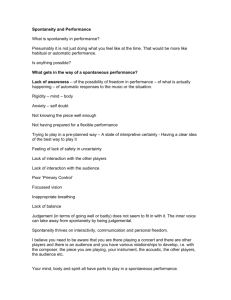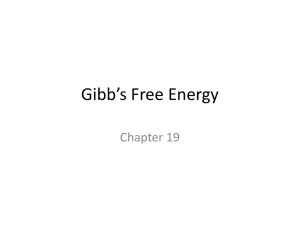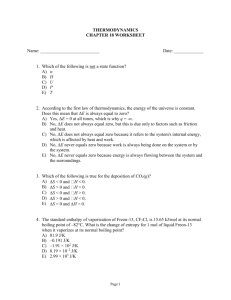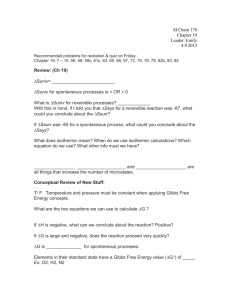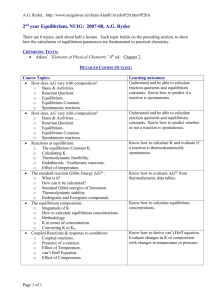17.1 b EQUILIBRIUM AND GIBBS FREE ENERGY
advertisement
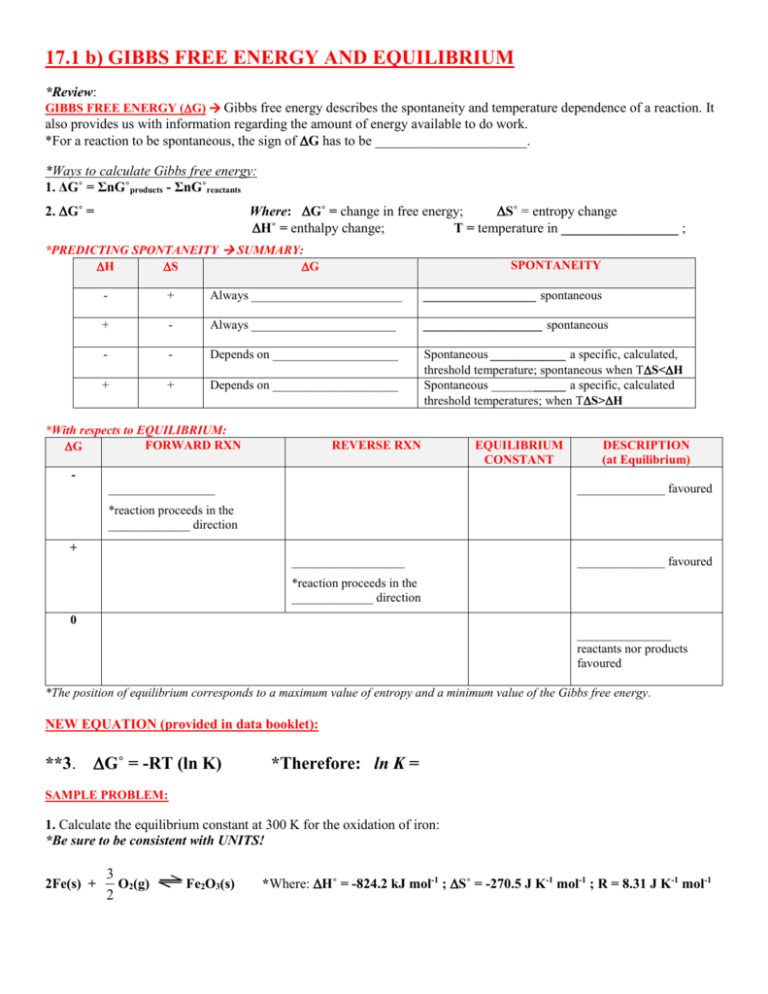
17.1 b) GIBBS FREE ENERGY AND EQUILIBRIUM *Review: GIBBS FREE ENERGY (G) Gibbs free energy describes the spontaneity and temperature dependence of a reaction. It also provides us with information regarding the amount of energy available to do work. *For a reaction to be spontaneous, the sign of G has to be ______________________. *Ways to calculate Gibbs free energy: 1. ΔG˚ = ΣnG˚products - ΣnG˚reactants 2. G˚ = Where: G˚ = change in free energy; S˚ = entropy change H˚ = enthalpy change; T = temperature in _________________ ; *PREDICTING SPONTANEITY SUMMARY: H S G SPONTANEITY - + Always ________________________ __________________ spontaneous + - Always _______________________ ___________________ spontaneous - - Depends on ____________________ + + Depends on ____________________ Spontaneous ____________ a specific, calculated, threshold temperature; spontaneous when TS<H Spontaneous ____________ a specific, calculated threshold temperatures; when TS>H *With respects to EQUILIBRIUM: FORWARD RXN G REVERSE RXN EQUILIBRIUM CONSTANT DESCRIPTION (at Equilibrium) _________________ ______________ favoured *reaction proceeds in the _____________ direction + __________________ ______________ favoured *reaction proceeds in the _____________ direction 0 _______________ reactants nor products favoured *The position of equilibrium corresponds to a maximum value of entropy and a minimum value of the Gibbs free energy. NEW EQUATION (provided in data booklet): **3. G˚ = -RT (ln K) *Therefore: ln K = SAMPLE PROBLEM: 1. Calculate the equilibrium constant at 300 K for the oxidation of iron: *Be sure to be consistent with UNITS! 2Fe(s) + 3 O2(g) 2 Fe2O3(s) *Where: H˚ = -824.2 kJ mol-1 ; S˚ = -270.5 J K-1 mol-1 ; R = 8.31 J K-1 mol-1
